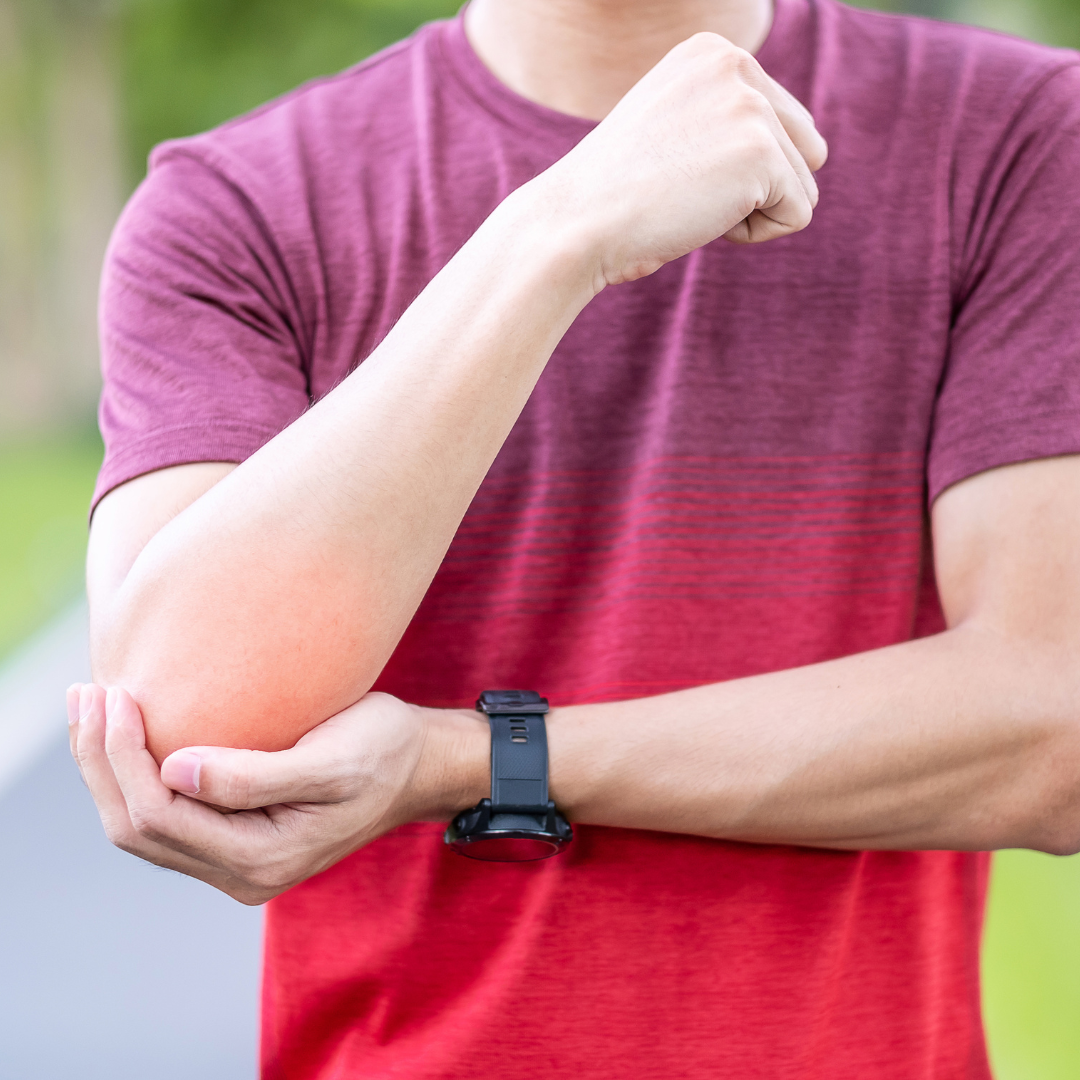|
‘Golfer’s and ‘Tennis Elbow’ are common complaints when it comes to those suffering from elbow pain, and yes it certainly happens even in people who don't play the sports these conditions take their nicknames from. Firstly, yes there is a difference between Tennis Elbow and Golfers Elbow, which is that one occurs at the outside of the elbow (Tennis Elbow) whereas the other occurs at the inside (Golfers Elbow).
The other difference is of course implied in the names in that they are often brought on by different repetitive activities that involve movements of the elbow - but its not limited to just tennis or golf. Beyond these distinctions however, is what they have in common, which is that they are both tendon overuse injuries, and that they are either going to be from the over-gripping activities which will require the muscles at the palm-side of the forearm, or else from the overextending activities of the wrist which will require the muscles at the backhand side of the forearm. And in case you haven't already guessed it, yes either of these muscle groups is connected to either side of the elbow! The best approach in terms of hands-on treatments with these types of injuries is to focus less work on the tendons themselves and rather more on all the muscles and muscle groups that join up with the tendons involved. This is because if the muscle tension at those specific muscles can be reduced it will relieve some of the tension at the tendons as well and essentially ‘de-load’ them, which can subsequently give them the time off they need to heal while not being constantly re-aggravated by the forces pulling on them. While most people often think of massaging sore areas, tendons that are already acutely inflamed actually don't love being directly worked on. Being tendon injuries, or what we call Tendinopathies (formerly Tendinitis/Tendinosis), they are usually an overuse type injury rather than acute (although an initial acute or sudden trauma/injury to a tendon can also lead to more chronic tendinopathies too), meaning that they usually come about as the result of repetitive use. For example, in this case, a builder having to use power tools for long periods and needing to grip tightly with their hand/s to maintain a stable hold while it moves and vibrates. All of this can stress and strain the tendons, and so it's important to remember that, due to the nature of the injury mechanism, we want to try and limit the forces on tendons as much as possible so as not to exacerbate them. So although we can work on muscles to reduce their potential strain on the tendons, it’s also necessary to reduce the loads on them in general, which could look like taking more regular but shorter work breaks, switching between different tasks and/or tools, using lower settings on machines and tools where possible, and being conscious of how hard you might be gripping / how much tension you really need to use vs how much you can relax as you maintain the task at hand. Anti inflammatories can be really helpful for this type of pain. We know a lot of patients who see us don't like to use medications, but tendon injuries are one type of condition that really responds well to that extra anti inflammatory support. By taking an anti inflammatory medication (as directed by your GP or pharmacist!) you can reduce the pain of your tendon and give yourself a chance to complete some of the pain relieving exercises we suggest. If you don't want to take anti inflammatory tablets, you can use a topical cream rubbed straight into the elbow. Also using ice on the tendons after a hard day to bring the inflammation back down and give them more time to recover during the night can be valuable. Another brilliant strategy with these elbow tendon issues is to use an elbow brace. Its an easy to use, affordable option that provides your angry tendon with a chance to take a break. The brace wraps around your forearm, and has a pressure point imbedded into it that you position over the area where the muscle and tendon connect, and this brace allows us to take load off the tendon by forming a new mechanical tension point. When you're wearing the brace, the muscle now moves from the brace to its other insertion point at the wrist, and gives the elbow attachments a recovery window. Our practitioners can help you fit the brace in the correct position for your pain. Lastly, once the initial symptoms are under control it’s a good idea to start rehabbing and building up strength and endurance of the muscles and tendons so as to ensure they have the capacity to do the work required of them. Using graded exercise is typically an important part in the actually healing process of the tendon repair too, as it helps to ensure that not only they build their capacity, but that they remodel and realign the tissues fibres and heal properly with less likelihood of reinjury by regaining some of there elastic and tensile properties. Tendons go really well with loaded exercises, but of course we need to get the weight level right for you. If you're already someone who has a lot of strength, you may start at a higher resistance level, but if you try to go too heavy too quick, that tendon can get very upset again. Our practitioners can help you with a quick daily exercise program that gets your tendon healthy again. Tendons can take time and persistence. You'll see us frequently at first while we get the pain levels under control, but our ultimate aim is to get you to the rehab stage where you follow the exercise program to rebuild strength. You may also experience a "stepping forward, stepping back" type of recovery with a tendon issue, because that area can get sensitised easily. We are here to help and support you through the process. If elbow and forearm pain has been getting in the way, please come and see us, we are here to help. Just call or leave a message with us at the Simple Wellness Myotherapy clinic here in Rowville on 03 8204 0970, or alternatively you can visit our website to see our booking schedule and make an appointment yourself for a time that best suits. |
Meet Our Team
We have a team of great practitioners available 7 days a week at our Rowville clinic. Archives
July 2024
Categories
All
|
Got a question about Myotherapy?
Contact Mel by phone, email or Facebook
|
Simple Wellness Myotherapy & Remedial Massage Clinic
Shop 12B 150 Kelletts Rd Rowville VIC 3178 |
Phone us on
03 8204 0970 |


 RSS Feed
RSS Feed